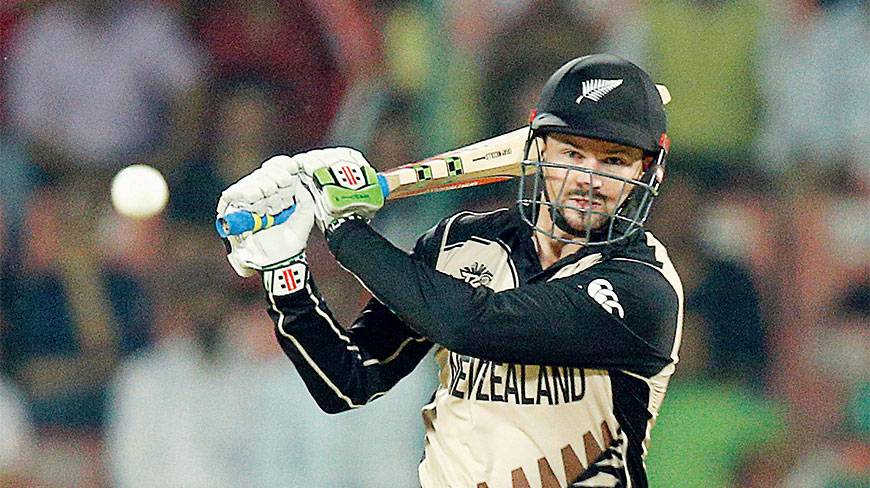The T-20 World Cup is being played in India this month, and it is non-stop entertainment time for all those who understand cricket and are passionate about it. There is a high level of interest and excitement, with endless debates around the toss, team selection, batting order, field placements, and of course, the umpiring decisions.
While the fans are gripped in a frenzy, it’s a good time to step back and see what lessons are there to be learnt from the T-20 format for those of us in the corporate world.
Before we get into the lessons, let’s take a brief journey in time to the early days of cricket, often referred to as the gentleman’s game. Cricket is generally believed to have been first played in southern England in the 16th century. The first Test match was played in March 1877 between an English team and an Australian team.
It would be almost another 100 years before the first ODI was played in January 1971 between Australia and England at the Melbourne Cricket Ground. When the first three days of the third Test were washed out, officials decided to abandon the match and, instead, play a one-off one day game consisting of 40 eight-ball overs per side. Australia won the game by five wickets.
After that, it took another 34 years before the first international Twenty-20 match was played in February 2005, where Australia defeated New Zealand at Eden Park in Auckland.
And since then, there has been no looking back. The T-20 format has taken the cricketing world by storm, and has gained immense popularity over the last decade.
So, what are the lessons that we can learn from T-20, which would be relevant for organisations in today’s world? I have tried to capture below five lessons.
Expand your playground
The T-20 format (read: Indian Premier League) came and converted cricket from a sport for the boys to a complete value-for-money family entertainer. This was done through carefully orchestrated marketing plans which included catchy advertising, music during the match, cheerleaders, and what have you. T-20 has cleverly expanded the consumer base to maximise revenues.
Organisations need to redefine their competitive set and play in a wider field. As we all know, the same Rs5 can be used to buy a bar of chocolate or a pack of biscuit or a bottle of fizzy drink or an ice-cream or even a samosa. Brands need to appropriately define their competitive set and accordingly devise their marketing plans to drive revenues.
Evolve new models
Today’s consumer is time-starved, and is carefully managing their time across multiple priorities. Products and brands need to give them what they want on their terms. T-20 has tailored its model such that it provides them quick-fire entertainment over a short duration of time, something akin to watching an EPL match or a Bollywood pot-boiler. Organisations need to understand their customer needs and tailor their business models to meet those needs.
The age of the utilitarian
T-20 has effectively put to bed the concept of a “specialist” — someone who could only bat or only bowl. Today, there is a premium placed on all-rounders or utility players, someone who can bat, bowl, and preferably field well. Organisations would do well to look for talent that is well-rounded and flexible, with a good business sense; someone who is not too technical and steeped in their own area of specialisation.
The F-words
The T-20 format requires players to use the 3Fs: To be fast, focused, and flexible. Similarly, organisations today are looking for employees who are conscious of increased speed to market, are focused on the consumer, and adapt themselves well to the changing environment.
A great example of this is Rahul Dravid. Branded as a Test cricketer, he reinvented himself to excel in ODIs, scoring more than 10,000 runs at a strike rate of over 70. He then went on to play T-20 and scored over 2,000 runs in the IPL at a strike rate of 115.
Constantly push the boundaries
The constraints that we work under very often spur creativity and enable us to achieve new highs. Nothing seems impossible in T-20.
There was a time when a batsman scoring a century in an ODI was a big deal. No longer so — there have been 20 centuries so far in over 500 T-20 matches. The fastest century has been in 45 balls! Batsmen come up with innovative shots, bowlers find new means to curb runs, fielders rise to greater heights — all in the pursuit of excellence in the face of challenges.
Organisations need to encourage employees to take risks, redefine the rules, and explore uncharted territories to come up with effective and efficient business solutions.
Over the last century, several iconic corporations have been built across the world on the back of some very strong fundamentals. Some continue to hold sway, while many who have not been able to cope with change have perished.
IBM is a great example of an organisation which evolved its business model with changing time so that it could survive. In the 1980s, IBM was the undisputed king of the computing world through the sales of its iconic PC.
However, the PC clones with their cheaper versions almost wiped them out in the 1990s. And that’s when IBM decided to abandon the core of its business model and started focusing on providing IT expertise and computing services, and it became the number one seller of enterprise server solutions by 2013.
In order to succeed in today’s dynamic environment, organisations need to correctly define the pond that they want to fish in, resource themselves appropriately, evolve their business models, be fast-focused-flexible, and be able to constantly push the boundaries of creativity. And as for the future, five-over a side cricket anyone?
Source: Dhaka Tribune











Very well written.
How about a 11-over match, with every player bowling 1 over & every player batting 1 over compulsorily ?. Wud be fun.
How about mixed cricket, combination of male & female players, as in mixed double tennis ?
If the purpose is entertainment & less of performance, see no problem. Its all a matter of cashing-in on the public pocket !!